Queensland is Australia’s second largest state in area. Western Australia is the largest. Queensland occupies the entire northeastern part of the continent. Its area is nearly five times that of Japan. Brisbane is the capital and largest city.

Queensland is known as Australia’s Sunshine State because of its pleasantly warm winters and long hours of sunshine. Large numbers of tourists visit the state throughout the year. Many of the 700 islands that are part of Queensland have been developed as tourist resorts.
The islands and coral reefs of the Great Barrier Reef shelter much of Queensland’s coastline. The Great Barrier Reef is the largest group of coral reefs in the world. The reefs attract many sailors, scuba divers, and fishing enthusiasts. Several marine biology research stations have been established on Great Barrier Reef islands.
Queensland was originally part of the British colony of New South Wales. In 1859, the Moreton Bay district was separated from the rest of New South Wales to form a new colony. This colony was named Queensland, after Queen Victoria of the United Kingdom. In 1901, Queensland and the other colonies in Australia became states when they united to form the Commonwealth of Australia.
People
Population.
About three-quarters of Queensland’s people were born in Australia. Other population groups include people born in China, Germany, India, New Zealand, the Philippines, South Africa, the United Kingdom, and Vietnam. About half the people live in the capital, Brisbane. Most of the rest live in cities and towns along the eastern coast. Gold Coast is Queensland’s second largest city.
Since the late 1900’s, the population of Queensland has been growing faster than that of any other Australian state or territory. Many people migrate to Queensland from other parts of the country. The most rapidly growing areas of Queensland are those associated with tourism and retirement, such as the Gold Coast and Sunshine Coast and Cairns in the far north.
Queensland is home to many Indigenous (native) peoples. These groups include the Torres Strait Islander peoples. They are the original inhabitants of the islands in the Torres Strait, which lies north of the Cape York Peninsula. Numerous Australian Aboriginal peoples also live in Queensland.
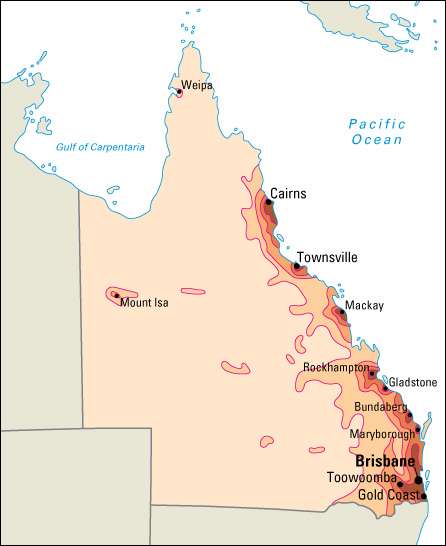
Schools.
Queensland has a system of free, required education for children between the ages of 6 and 16. Most children attend one year of preschool, seven years of primary school, and six years of secondary school. Students who successfully complete six years of secondary school receive the Queensland Certificate of Education.
The state government operates most of Queensland’s primary and secondary schools. Religious institutions, primarily the Roman Catholic Church, operate most of the remaining schools. Queensland has special schools for children with disabilities.
Children in thinly populated areas receive instruction at home from a correspondence school, also called a school of distance education. The students receive and turn in their assignments by mail. Teachers communicate with students using two-way radios, computers, and televisions. The centers for Queensland’s schools of distance education are in Brisbane, Cairns, Capricornia (in Emerald), Charleville, Charters Towers, Longreach, and Mount Isa.
There are 12 universities in Queensland. The University of Queensland, the oldest university in the state, began holding classes in Brisbane in 1911. The state’s other universities are Griffith University, James Cook University, Queensland University of Technology, Central Queensland University, the University of Southern Queensland, the University of the Sunshine Coast, the private Bond University, and campuses of the Australian Catholic University, Federation University Australia, Southern Cross University, and Torrens University. The state also has several private colleges. Queensland’s Technical and Further Education (TAFE) Institutes serve as the state’s largest provider of postsecondary education.
Land and climate
Queensland’s greatest length from north to south is 1,300 miles (2,090 kilometers). Its greatest width is a little more than 930 miles (1,500 kilometers).

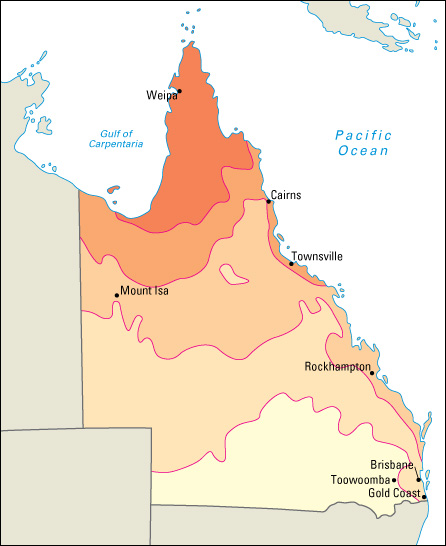
Land regions.
Queensland can be broken into seven different land regions. They are (1) the Eastern Basins and Ranges, (2) the Cape York Peninsula, (3) the Gulf Country, (4) the Central Lowlands, (5) the Darling Downs, (6) the Barkly Tableland, and (7) the Channel Country.
The Eastern Basins and Ranges
begin at the New South Wales border and spread northward. This region includes the many small islands off the coast, the Great Dividing Range, and Queensland’s highest mountain, the 5,287-foot (1,611-meter) Mount Bartle Frere, which is part of the Bellenden Ker Range. Immediately west of the mountains is a high plateau that supports lush forests and receives high rainfall. This area includes the fertile soils of the Atherton Tableland. The northern and midland coasts are forested areas that receive heavy rainfall. The Fitzroy is the largest of the coastal basins. Vast reserves of coal can be found throughout the basin.
The Cape York Peninsula
consists of low-lying grasslands with few trees. All the major rivers of the peninsula, except the Normanby, flow west to the Gulf of Carpentaria.
The Gulf Country
consists of plains surrounding the Gulf of Carpentaria. This region is flat and has a border of mangrove tree swamps and salt flats on the gulf coast. The large gulf rivers often flood across the broad plains in the summer monsoon season. Forests cover much of the region.
The Central Lowlands
consists of plains of Mitchell grass in central and southern Queensland, away from the coast. The country is flat and generally featureless.
The Darling Downs
in southeast Queensland slope gently from the Main Range to the flat Condamine Plain. The region is well suited to farming.
The Barkly Tableland
is a flat and treeless limestone plateau in western Queensland. The plateau extends into the Northern Territory.
The Channel Country
is the arid southwest corner of Queensland. The region gets its name from the network of channels that flooded rivers make on their way toward Lake Eyre in South Australia.
Rivers and lakes.
Most of Queensland’s rivers flow south and west from the Great Dividing Range. Cooper Creek and the Diamantina River flow southwest to Lake Eyre. Farther south, the Warrego and Condamine rivers flow southward and join the Darling River in New South Wales.
Rain falls mainly in the ranges and lowlands of the east and north of Queensland. As a result, most of the permanent streams are in the coastal districts. The only large lakes are artificially created reservoirs. Lake Eacham and Lake Barrine are two small, deep crater lakes on the Atherton Tableland.
The Great Artesian Basin lies under the lowlands of western and northern Queensland. This vast underground rock formation is Australia’s chief source of artesian water—ground water that can be brought to the surface simply by digging wells. The Great Artesian Basin provides much of Queensland with stock water (water for livestock).
Climate.
Queensland lies within the tropics and subtropics and has a fairly varied climate. Thursday Island, which lies in the Torres Strait off Cape York Peninsula in the north, has an average monthly temperature of 81 °F (27 °C). Brisbane, in the south, has average temperatures ranging from about 59 °F (15 °C) in winter to about 77 °F (25 °C) in summer. The coldest area in Queensland is the Granite Belt in the southeast, where winter temperatures average about 50 °F (10 °C). Statewide, temperatures in Queensland average 65 °F (18 °C) in July and 90 °F (32 °C) in January. 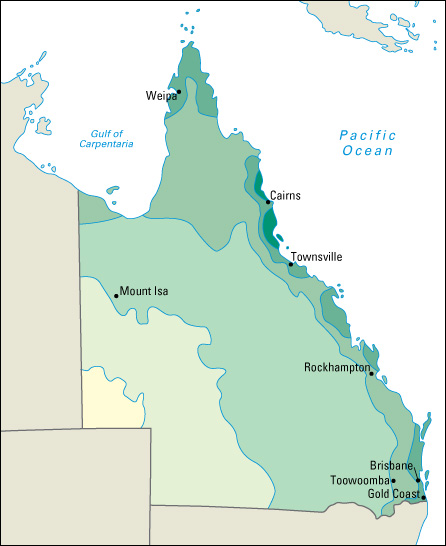
Queensland receives most of its rain from December to March. The southeast trade winds carry moisture from the Pacific Ocean to the coastal areas. Rainfall is heaviest in the northeast, where high mountain ranges are close to the coast. The coastal strip from Ingham to Port Douglas is the wettest part of Australia. In this area, rainfall averages 160 inches (406 centimeters) a year. Farther inland, the rainfall decreases. In the extreme west, as little as 6 inches (15 centimeters) of rain falls in a year. The north receives rain associated with summer monsoon conditions. Heavy rainfall also occurs as part of tropical cyclones, which can bring gale-force winds and cause great destruction in coastal areas.
Economy
Queensland has traditionally depended on mining and agriculture for much of its wealth. In recent years, the tourism, education, and construction industries also have helped to support the economy.
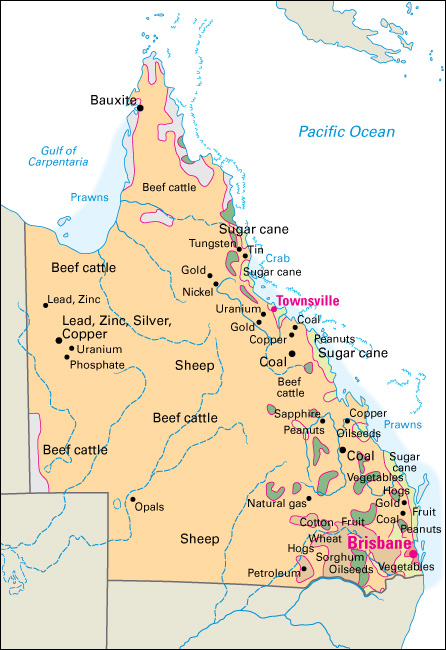
Agriculture.
Most of the total area of Queensland is used for grazing sheep and cattle. In comparison, only a small percentage is used for growing crops. Most crops are grown in the more fertile coastal areas. Many of Queensland’s farms use irrigated land.
A wide range of crops can be grown in Queensland because of the varying climates in different parts of the state. The chief crops include sugar cane and cereals such as sorghum and wheat. Farmers also grow apples, bananas, citrus fruits, cotton, grapes, peanuts, and tomatoes.
Queensland’s largest rural industry is the raising of beef cattle for meat production. The state raises about half of Australia’s beef cattle. Raising sheep for wool production is an important industry on the dry inland plains of southern and central Queensland. Dairy cattle are grazed in the coastal river valleys of the Moreton and Burnett regions, the eastern Darling Downs, and the Atherton Tableland. Chickens and hogs are raised mainly in the southeast corner of the state. 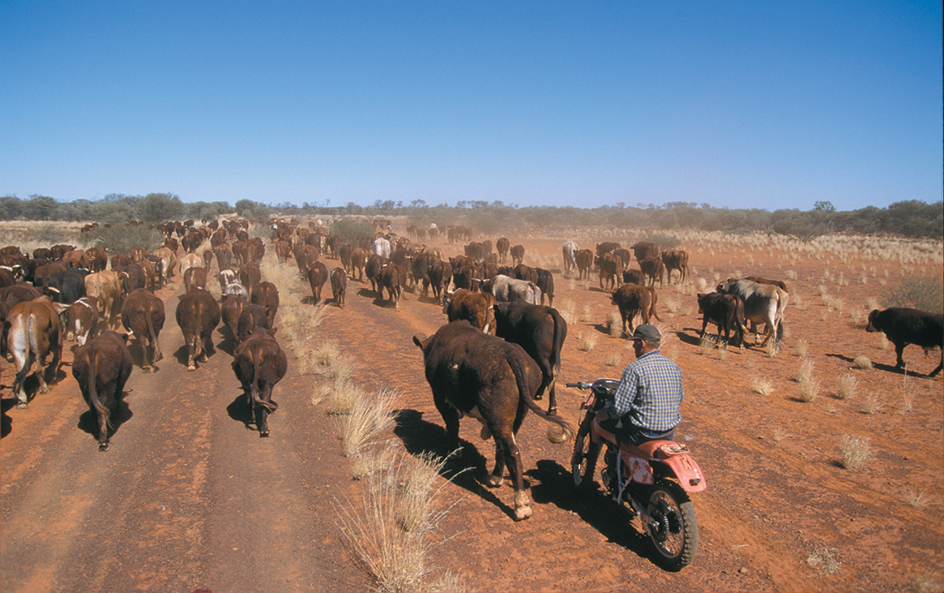
Queensland produces most of Australia’s raw sugar. Sugar cane is grown in the river flats along the Queensland coast. Most of the sugar is exported.
Apples, peaches, pears, wine and table grapes, and other temperate fruits are grown in the cool Granite Belt, a high stone plateau in the southern part of the state. Tropical fruits, such as bananas, mangoes, and pineapples, are grown along the coast. Cotton production has increased in Queensland with the development of irrigation areas. Cotton is grown mainly in the southeast part of the state. Queensland is also Australia’s leading peanut-growing state.
Mining.
Queensland is one of Australia’s leading mining states. The state’s northwest region is one of the leading mineral-producing areas in the world. The state has large deposits of bauxite, clays, copper, lead, magnesite, mineral sands, silica, silver, tin, and zinc. The Mount Isa Mine is one of the largest underground mines in the world and one of the few mines where four minerals—copper, lead, silver, and zinc—are found close together. One of the world’s largest bauxite mines is in Weipa, on the western side of Cape York Peninsula.
The state produces more than half of Australia’s coal, and is one of the world’s largest coal exporters. Most of Queensland’s coal comes from open-pit mines in the Bowen Basin, in the central part of the state.
Gold is mined in the eastern part of the state and in the Mount Isa area. Gemstones, primarily chrysoprase, opals, and sapphires, are also mined. The state also has significant oil and natural gas reserves.
Manufacturing.
Manufacturing employs about 10 percent of the state’s workforce. Brisbane is the state’s major industrial center. The state’s leading manufactured products include aluminum; chemicals; fabricated metal products; food products, especially meat and processed sugar; and machinery.
Service industries
are rapidly growing in importance in Queensland, as they are elsewhere in Australia. They include business services, education, government services, information technology, retail trade, and tourism. About 70 percent of the state’s workers are employed in service industries.
Transportation.
Queensland has an extensive system of public roads. Many roads in the remote interior of Queensland are unpaved.
A long-distance luxury train, the Spirit of Queensland, and the high-speed Tilt Train service operate between Brisbane and several eastern cities as far north as Cairns. The modern electric suburban train system in the Brisbane area was extended in the late 1990’s to link Brisbane to the Gold Coast. There are also regular services connecting Brisbane with interior regions, with one line going to Longreach in the northwest, and another going to Charleville in the southwest. The Inlander service runs between Townsville and Mount Isa. The state also has scenic train services in the northern part of the state that operate primarily for the tourist trade.
Queensland has international airports at Brisbane, Cairns, and Gold Coast. The state’s main ports are Abbots Point, Brisbane, Gladstone, Hay Point, Townsville, and Weipa.
Government
The government of Queensland consists of the state Parliament and a representative of the British monarch, the governor. The state Parliament has most of the governing power.
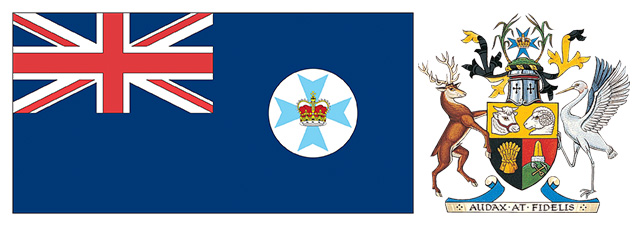
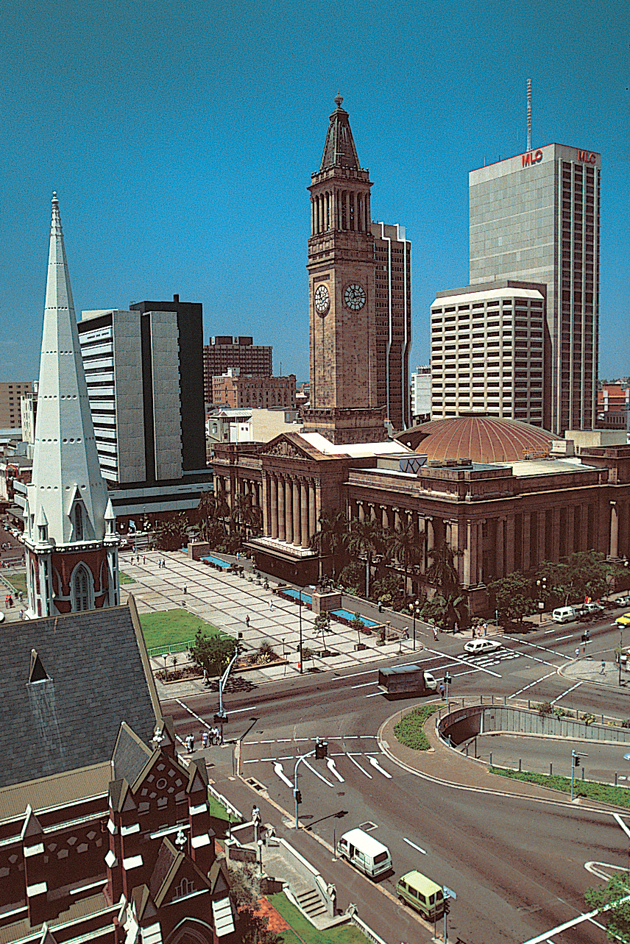
Legislature.
Unlike other Australian states, Queensland has a unicameral system—that is, there is only one house in Parliament. This house, called the Legislative Assembly, consists of 93 members who are elected to four-year terms. At one time, Queensland had an upper house called the Legislative Council, but it was abolished in 1922.
Executive.
The British monarch, on the advice of the Queensland government, appoints the governor as the chief executive for the state. This position is largely ceremonial, however. Most executive power is exercised by the party or coalition that wins the majority of seats in the Legislative Assembly. Assembly members from the winning party or coalition form the government and select a leader, called the premier. The premier selects ministers who then administer the affairs of government departments.
The governor presides over the Executive Council, which consists of the premier and the department ministers. Bills passed by the assembly must receive approval from the Executive Council and be signed by the governor before they become law. In practice, the governor acts on the recommendation of the ministers.
Revenue.
The Queensland government receives revenue from a number of sources, including land taxes, stamp duties (taxes), and shares of mining profits. In addition, grants from the federal government make up a major part of government revenue.
Voting.
In Queensland, as in the rest of Australia, all citizens 18 years of age or older must vote. Both state and federal candidates are elected through preferential voting, which allows voters to rank candidates in order of preference. See Preferential voting.
Local government
units in Queensland are cities, regions, and shires. Queensland has 77 local councils, including several Aboriginal and Torres Strait Island councils. These local governments are democratically elected. They provide a variety of services related to land use, buildings, roads, libraries, recreation facilities, sanitation and health, parks, gardens, water supply, and sewerage.
History
Indigenous peoples.
Aboriginal peoples have lived in Australia for more than 65,000 years. Archaeologists have estimated that people probably came to the continent from Southeast Asia during the last ice age, when New Guinea was connected to Queensland by a land bridge. At that time, the waters separating Australia and New Guinea from the lands to the north were narrower. The Gulf of Carpentaria was a huge, salty swamp, and tropical seas were much cooler than today. One of the oldest Aboriginal archaeological sites in Queensland dates from about 19,000 years ago. Cave paintings and tools were discovered at this site in the Kenniff Cave at Mount Moffatt in the Great Dividing Range.
Some evidence indicates that people may have lived in areas of the Torres Strait as many as 9,000 years ago. Archaeologists have found evidence that permanent settlements existed on some islands in the western Torres Strait at least 4,000 years ago. Later, other groups from New Guinea settled the eastern and central islands. See Torres Strait Islands.
The Aboriginal peoples and Torres Strait Islander peoples who lived in what is now Queensland belonged to many different groups that spoke a variety of languages. Their cultures also varied.
Early European settlement.
Some historians believe that Portuguese sailors visited the coast of Queensland during the 1500’s. However, few records of this early exploration have been found. The first of the early Dutch voyages to Australia’s north coast apparently took place in 1606. In that year, Willem Jansz sailed the Duyfken into the Gulf of Carpentaria and briefly visited the west coast of Cape York Peninsula. He was followed in 1623 by another Dutchman, Jan Carstensz, who explored the gulf more thoroughly.
The British navigator James Cook sailed up the east coast of Australia in 1770. Cook made accurate charts and several landings. He claimed the region for Britain (now also called the United Kingdom) and called it New South Wales. The British colony of New South Wales, first established in 1788, included what is now Queensland. In 1799, and again in 1802, the British navigator Matthew Flinders explored the Queensland coast, making accurate surveys. From 1818 to 1822, Phillip Parker King, an Australian-born navigator, charted the inner route between the eastern coasts and the Great Barrier Reef.
When Sir Thomas Brisbane arrived from Scotland to become governor of New South Wales in 1821, the existing penal (prison) settlements at Port Jackson and Norfolk Island had become overcrowded. In 1822, Commissioner John Thomas Bigge, a British government representative in New South Wales, suggested moving the most hardened convicts to a new settlement at Moreton Bay.
In 1824, the convicts and their guards landed at Redcliffe Point. The site, however, proved unsatisfactory, in part because it lacked a safe anchorage. The men soon decided to move the settlement to the present site of Brisbane.
From 1826 to 1830, Captain Patrick Logan, a British soldier, was in charge of the Moreton Bay penal settlement. Under his leadership, convicts were often brutally punished. The number of convicts at the settlement reached its highest point of about 1,060 men and women in 1831. After that point, however, the number of convicts quickly declined. In 1839, the government of New South Wales decided to remove the last of the convicts and to open the area to free settlement.
The first part of Queensland to attract free settlers was the Darling Downs. Allan Cunningham, an English botanist, had discovered the downs in 1827. He reported sighting a gap in the ranges to the east of the downs. He climbed through the gap in August 1828. Exploration continued, and reports of the good grazing land went back to the United Kingdom. European settlement of the Darling Downs began in 1840.
For several years after the official closing of the penal colony at Brisbane, a ban on settlement by free colonists within 50 miles (80 kilometers) of the site remained in effect. In 1842, the ban was finally lifted, and settlers moved into the fertile Moreton lowlands. John Dunmore Lang, a Scottish-born preacher and political leader, visited Brisbane in 1845. Lang was working to end the practice of transportation of convicts, the British policy of sending convicts to Australia. Lang also worked to encourage and assist more free settlers to migrate to Australia. In 1849, three ships carrying Scottish immigrants recruited by Lang arrived at Moreton Bay.
Growth of the colony.
On Dec. 10, 1859, the Moreton Bay district was separated from New South Wales and made into the colony of Queensland. Brisbane became the capital of the new colony. The colony had a governor, an appointed Legislative Council, and an elected Legislative Assembly. The first governor was Sir George Bowen, and the first premier was Robert G. W. Herbert.
At first, the colonial government encouraged its settlers to grow cotton. However, when the United States began to export cotton again after the American Civil War (1861-1865), many Queensland settlers turned to sugar cane production. This industry was soon to become the main source of wealth for the new colony.
Gold was discovered at Gympie in 1867, and the first gold rush in Queensland began. With the influx of gold prospectors, the colony’s population grew rapidly.
During the 1870’s, the rush for sugar lands in the fertile coastal districts began. Plantation owners brought people from the Pacific Islands to Queensland to work in the fields. The first of these islanders were brought to Queensland by Robert Towns, a merchant and estate owner, to work on his cotton plantation on the Logan River. This cheap source of labor soon was exploited to benefit the sugar industry. However, working conditions for these laborers could be harsh. Some Pacific Islanders were kidnapped and taken to Australia. A federal law passed in 1901 prohibited the use of Pacific Island laborers starting in 1904.
The 1900’s.
In 1901, Queensland joined with the other colonies in Australia to form the Commonwealth of Australia. From 1915 to 1929, the Australian Labor Party (ALP) controlled Queensland’s government. ALP Premier Edward G. “Red Ted” Theodore, who served from 1919 to 1925, established unemployment insurance. He also presided over the abolition of the upper house of Parliament, the Legislative Council, in 1922.
In 1920, the airline Qantas was founded in the Queensland outback. Since then, Qantas has grown to become Australia’s largest domestic airline and one of the world’s leading international airlines. Qantas was originally known as the Queensland and Northern Territory Aerial Services Ltd. (QANTAS).
From 1942 to 1944, Brisbane served as the headquarters for the Allies’ southwest Pacific campaign against the Japanese during World War II (1939-1945). In the years following the war, Queensland experienced massive population growth, partly fueled by a boom in mining, tourism, and people moving to Queensland when they retired.
The ALP held power in Queensland from 1932 until 1957. A conservative coalition of the Country Party (later National Party) and the Liberal Party controlled Queensland’s government from 1957 to 1983, and then the National Party controlled it alone until 1989. In 1974, Brisbane experienced massive flooding as a result of Cyclone Wanda. Construction of the Wivenhoe Dam on the Brisbane River began in 1976 as a flood control measure and was completed in 1985. In 1982, Queensland hosted the Commonwealth Games, which prompted the construction of several new hotels. In 1988, Brisbane hosted the World Expo. These international events encouraged growth and development that continued through the 1990’s and early 2000’s.
The ALP regained political power in Queensland in 1989 and held it until 1996. From 1996 to 1998, a coalition of the National Party and the Liberal Party controlled the government. In 1998, the ALP returned to power with Peter Beattie as premier.
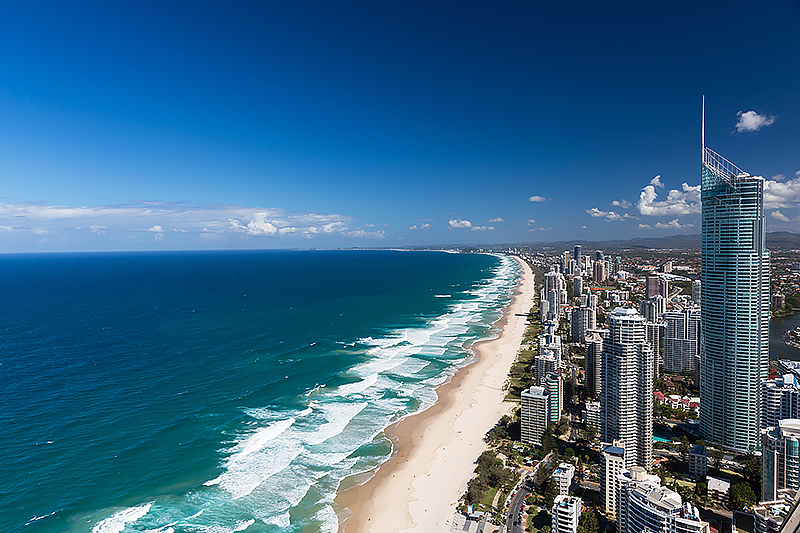
In 1992, the High Court of Australia, the country’s highest judicial body, handed down a landmark ruling on a case brought by a group of Torres Strait Islander people led by Eddie Koiki Mabo. The court’s decision recognized that Australia’s Indigenous peoples had had complex systems of land possession before British colonization. The court also recognized that this traditional form of ownership, which it called native title, still existed where Aboriginal and Torres Strait Islander peoples continued to occupy their land. The Mabo Decision represented a major shift in the recognition of Indigenous customs, laws, and rights. 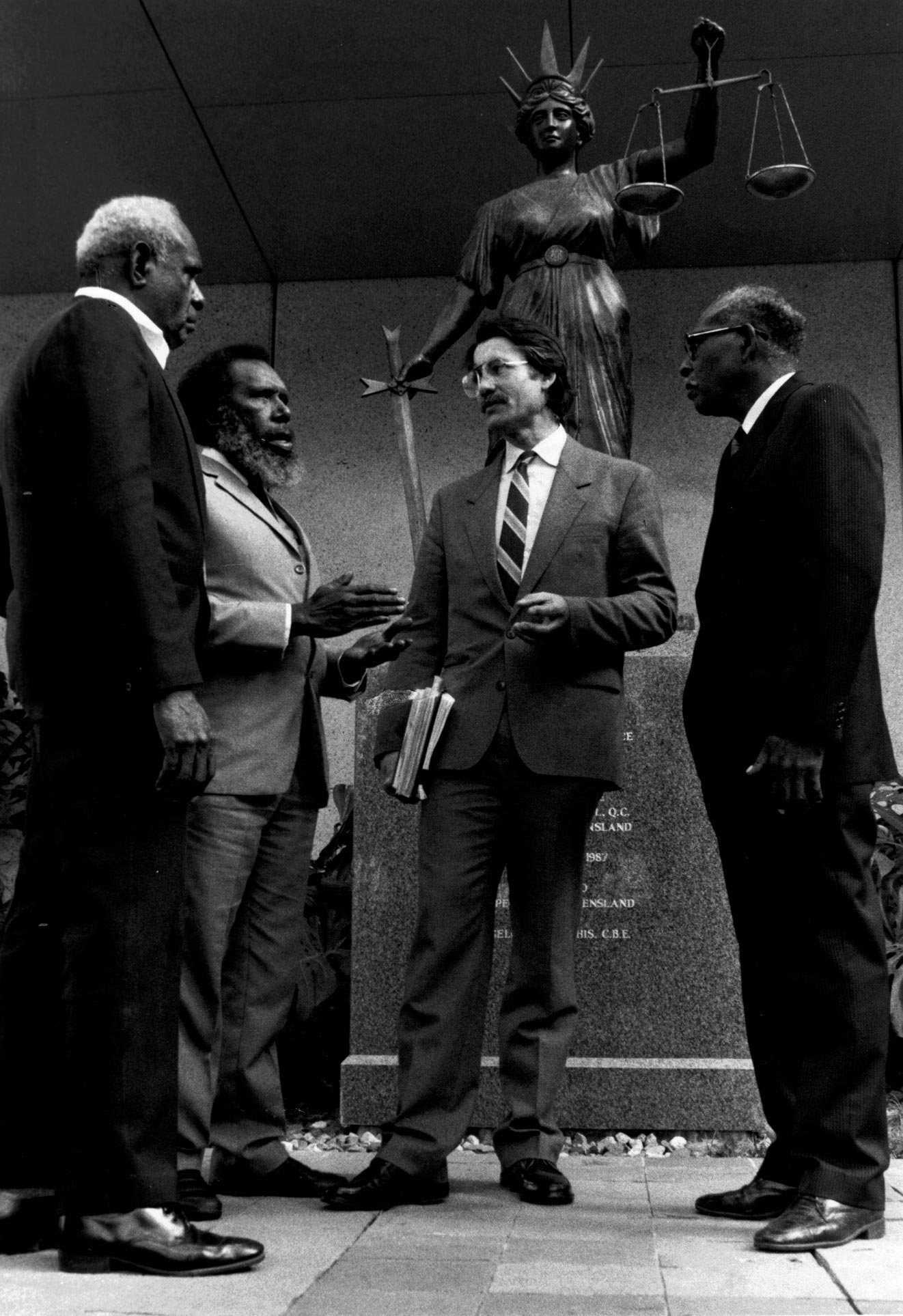
The 2000’s.
In 2007, Peter Beattie resigned and his deputy, Anna Bligh, became the first female premier of Queensland. Bligh won reelection to the post in 2009 and served until 2012. In 2008, the Queensland branches of the Liberal Party and the National Party combined to form the Liberal National Party of Queensland (LNP). Campbell Newman of the LNP served as premier from 2012 to 2015. Annastacia Palaszczuk of the ALP was elected premier in 2015.
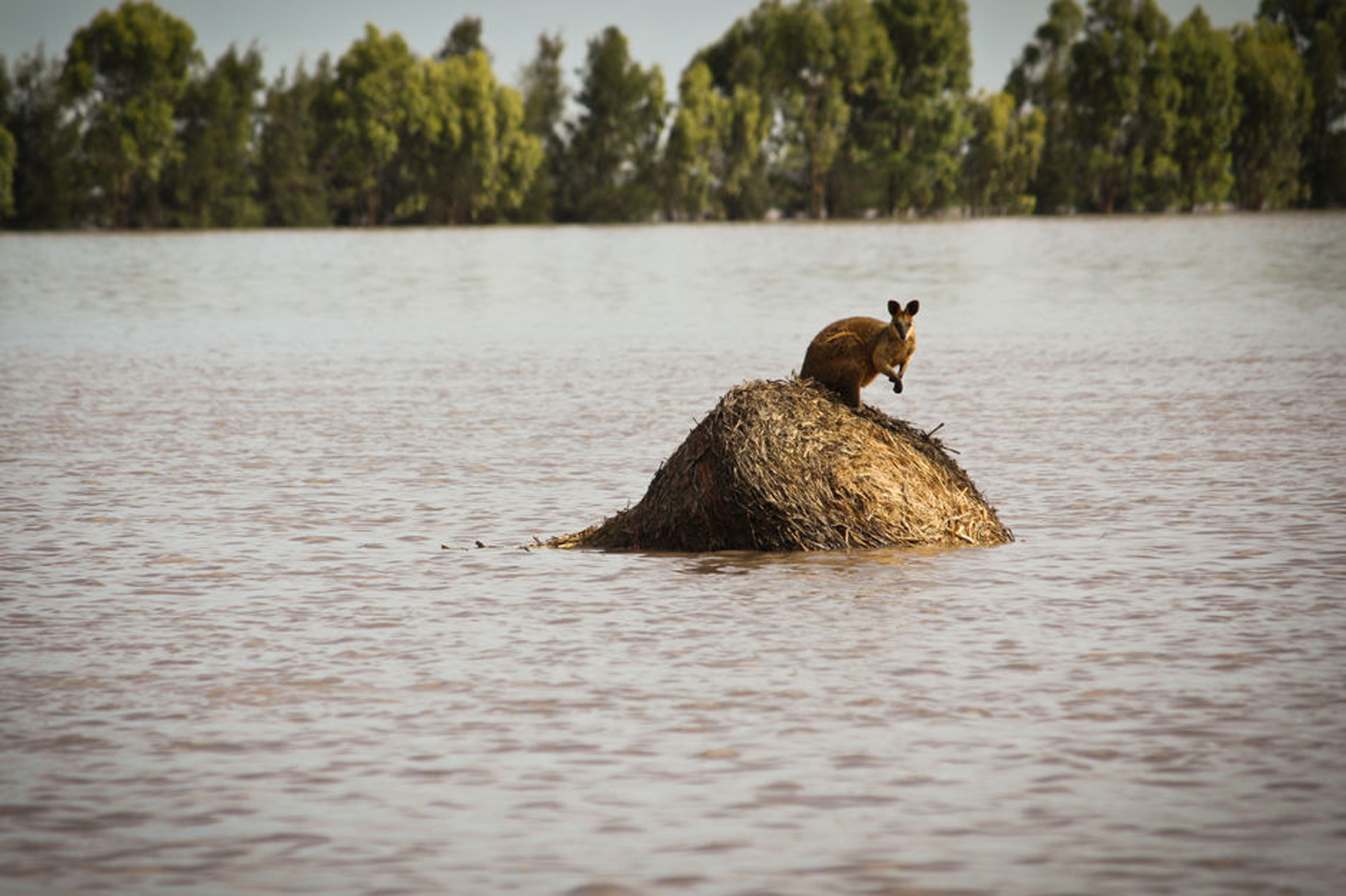
During the early 2000’s, serious floods occurred in several parts of eastern Queensland. Flooding resulted from Tropical Cyclone Larry in 2006 and from periods of heavy rains in late 2010 to early 2011 and again in early 2019. The floods devastated crops, left many people homeless, and damaged thousands of buildings.
In late 2019, intense drought conditions and high temperatures throughout much of Australia led to an outbreak of bushfires across the country. Seasonal wildfires in parts of northern and western Queensland are not uncommon. However, eastern Queensland was hit particularly hard from late 2019 to early 2020. Dozens of fires raged, impacting the more populated areas of eastern Queensland. Heavy rains finally helped firefighters contain the blazes, but then threatened some areas with flooding. The fires burned more than 19 million acres (7.7 million hectares) of land in Queensland and destroyed many buildings. Early 2020 also brought the health care and economic challenges of the COVID-19 pandemic to Queensland, as it did to other regions of Australia and the world.
Annastacia Palaszczuk unexpectedly announced her resignation as Queensland’s premier in December 2023. She was succeeded as premier by Deputy Premier Steven Miles, also of the ALP.
